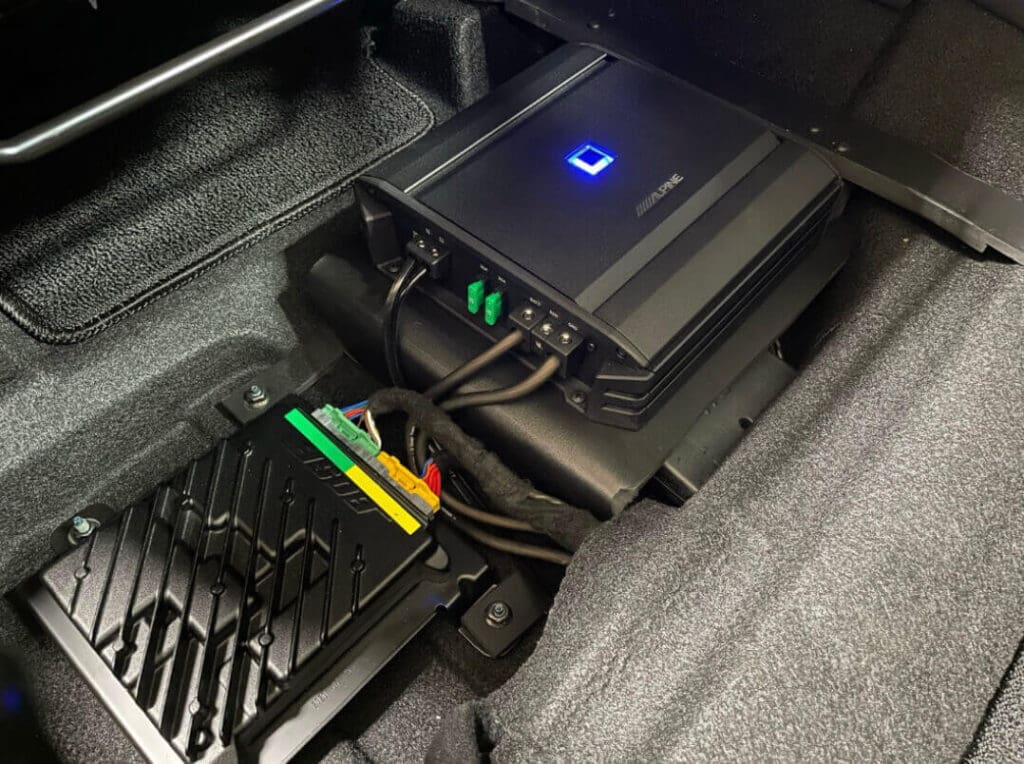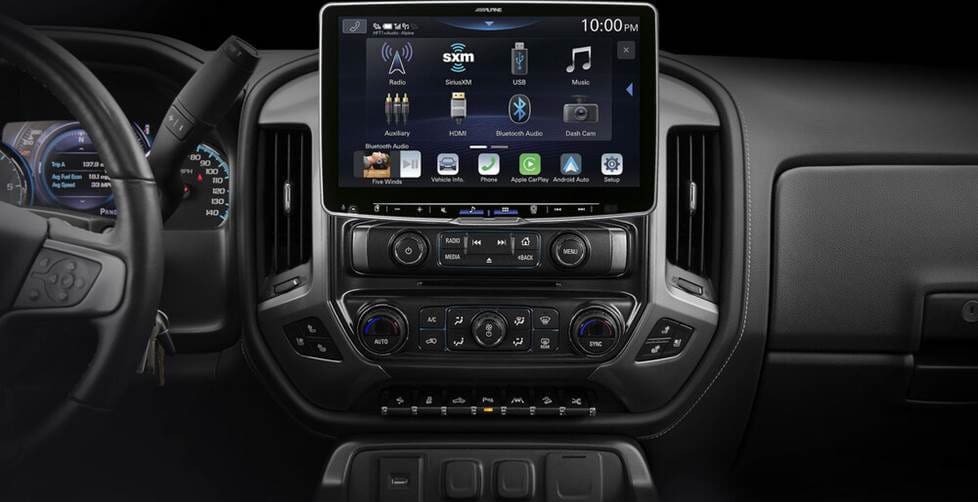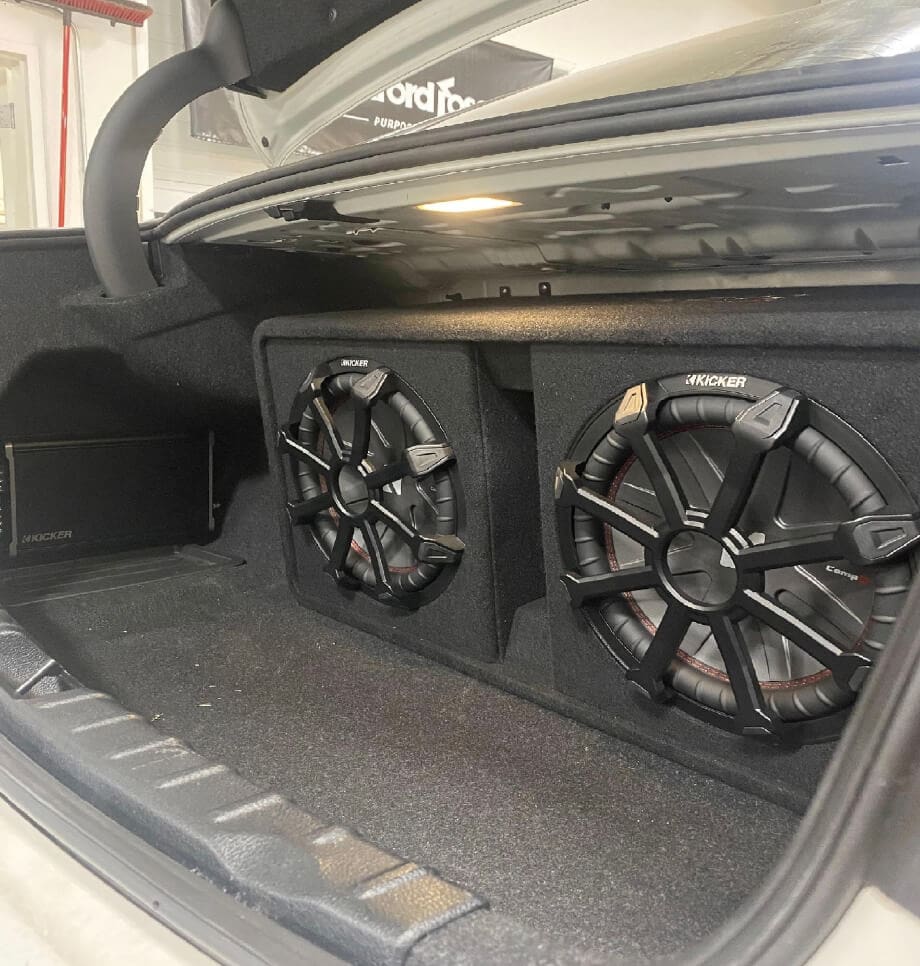Car Audio Upgrades: Where to Start for the Best Sound Quality
Upgrading your car’s audio system is one of the most rewarding ways to enhance your driving experience, but knowing where to start can feel overwhelming. With so many components to choose from—head units, speakers, amplifiers, and subwoofers—it’s easy to get lost in the noise of conflicting advice online.
At Flynn Audio, we’ve been helping drivers make the right upgrades for years. This guide brings together professional insights and real-world expertise to create a clear roadmap for upgrading your car stereo system. Whether you’re looking for enhanced clarity, deeper bass, or a complete system overhaul, we’ll break down the process to help you make informed decisions.
By the end of this guide, you’ll understand the best order to upgrade your system and how tailored advice can ensure your setup perfectly matches your needs. Let’s get started on the path to better sound quality.
What to Know About Your Car’s Audio System Before Upgrading
Assessing What’s Broken or Outdated in your Car Stereo System
Start by identifying any issues with your current system. Broken or malfunctioning components can compromise your listening experience, so addressing these problems should always be the first step. Here’s how to recognize common issues:
Signs of a Blown Car Speaker
- Distorted or Damaged Sound: A buzzing or rattling sound, especially at lower volumes, is a common sign of a damaged speaker.
- Low or No Output: If one speaker is significantly quieter than the others or isn’t producing any sound at all, it may no longer be functioning.
- Unusual Vibrations: Excessive vibration or crackling can indicate physical damage to the speaker cone or internal components.
Signs of a Car Stereo Head Unit Malfunctioning
- Intermittent Power Loss: If your radio turns off unexpectedly or struggles to power on, it may have wiring issues or a failing internal component.
- Unresponsive Controls: Faulty buttons, a malfunctioning touchscreen, or a broken volume knob can make a head unit frustrating to use.
- Outdated Technology: While not technically “broken,” older factory head units often lack features like Bluetooth or smartphone integration, limiting the system’s functionality.
Other Common Issues of a Broken Car Audio System
- Weak or Muffled Bass: If the low-end frequencies lack punch or depth, your subwoofer or amplifier might not be performing correctly.
- Static or Signal Interference: Persistent static or inconsistent sound may indicate damaged wiring or poor signal connections.
Steps to Identify a Car Stereo Problem
If you’re unsure whether a component is broken, here are a few steps to help:
- Listen Closely: Pay attention to sound quality at different volumes. Distortion or unusual noises often point to speaker or subwoofer issues.
- Inspect for Damage: Check speakers for visible impacts, tears, loose connections, or other signs of wear.
- Test Components: Compare the performance of individual speakers or features. A weak link will often stand out during direct comparisons. Use the Balance and Fade feature to identify the damaged speaker.
- Eliminate Simple Causes: Adjust the equalizer settings and confirm that your audio balance (left vs. right, front vs. rear) isn’t unintentionally skewed. Set all EQ settings to their median level or zero. Setting the EQ to its max settings is not helping it to sound better and can often stress the system.
Fixing or replacing malfunctioning components is only the first step. Once you’ve ensured everything is in working order, the next question becomes: Is your current system capable of delivering the performance you want? Understanding your vehicle’s compatibility with modern upgrades can make all the difference.

Evaluating Your Vehicle’s Compatibility with Car Audio Upgrades
Not all vehicles are created equal when it comes to audio upgrades. Some offer flexibility for customization, while others present challenges that can limit your options. Understanding your car’s compatibility with modern upgrades is key to creating the perfect audio system. Understanding that while almost anything is possible, some solutions may be cost-prohibitive or out of the budget, it’s important to manage expectations.
Newer Vehicles with Integrated Stereo Systems
Modern vehicles often feature integrated systems that connect the audio system to other functions, such as climate control, navigation, or backup sensors. While this integration offers convenience, it can make upgrades more complex. Replacing the head unit, for example, may require special adapters or integration modules to ensure these additional features continue to function properly.
Additionally, factory-installed premium systems in newer cars might already offer decent sound quality. In these cases, upgrading specific components—like speakers or adding a subwoofer—can deliver significant improvements without replacing the entire system.
Older Vehicles with Simpler Car Audio Systems
In contrast, older vehicles tend to have straightforward audio setups that are much easier to upgrade. These cars often lack the advanced integration seen in newer models, allowing for simpler replacements of the head unit, speakers, or even the addition of an amplifier and subwoofer.
Older systems are also simpler, meaning fewer compatibility issues, making them ideal for building a fully customized sound system. If you’re driving a vehicle over a decade old, upgrading the head unit is often a great starting point, as it adds modern features like Bluetooth and smartphone integration, such as Android Auto or Apple CarPlay.
Key Considerations for Car Stereo Compatibility
To ensure your upgrades go smoothly, keep the following factors in mind:
- Factory Premium Systems: Some cars come with premium audio systems from the factory. These systems may include proprietary amplifiers or wiring that could complicate certain upgrades.
- Dashboard Space: Upgrading the head unit often depends on the available space in your dashboard. Double-DIN units may not fit in vehicles designed for single-DIN systems without additional modifications. The larger issue is that a factory 7” screen may not indicate that a new screen can replace it as many screens are a standalone piece without any depth available for a new radio.
- Wiring and Power Requirements: High-powered amplifiers or subwoofers may require additional wiring or upgrades to the vehicle’s electrical system to avoid strain on the battery or alternator.
Why Car Audio System Compatibility Matters
Understanding your vehicle’s unique setup ensures you make the right upgrade choices. By knowing what’s feasible you can: avoid unnecessary costs, choose components that fit seamlessly, and plan a system that delivers exceptional sound quality without compromising functionality.
With a clear understanding of your vehicle’s compatibility, it’s time to explore the ideal order of upgrades. What should you upgrade first to get the most out of your car stereo system? Let’s dive into the next step.

The Ideal Order for Car Audio Upgrades
Once you’ve assessed your current system and determined your vehicle’s compatibility with modern upgrades, it’s time to decide where to start. Upgrading a car audio system is often a step-by-step process, but the order of upgrades can significantly affect your overall results. At Flynn Audio, we’ve helped countless drivers enhance their audio systems, and based on our experience, this is the recommended sequence.
Upgrade Car Stereo Step 1: Start with the Head Unit
The head unit is the control center of your car’s audio system. Upgrading this component first can unlock many modern features, such as Bluetooth connectivity, Apple CarPlay, or Android Auto. A new head unit can improve the overall audio quality by delivering a cleaner, more powerful signal to your speakers when compared to the factory radio. Often the equalizer is much more in depth as well which allows the sound to be customized.
If your vehicle allows for head unit replacement, this is typically the best place to start when installing a new car stereo. Modern head units often eliminate the need for additional adapters or workarounds when integrating amplifiers and subwoofers, making future upgrades more straightforward.
Upgrade Car Stereo Step 2: Add a Subwoofer
A subwoofer provides the rich, deep bass that factory systems often lack. Adding a subwoofer is the second most impactful step, as it creates a fuller, more dynamic listening experience. While many think subwoofers take up too much space, modern designs are compact and can fit seamlessly into most vehicles without sacrificing functionality.
Keep in mind that adding a subwoofer requires its own amplifier which should be accounted for when planning a budget. Additionally, specialized wiring is required to supply power and audio signal to the amplifier.
Upgrade Car Stereo Step 3: Upgrade the Speakers
Factory speakers are often a weak link in a car’s audio system. Replacing them with high-quality aftermarket speakers can dramatically improve sound clarity, detail, and overall sound quality. Whether you choose coaxial or component speakers, this upgrade ensures the sound from your system matches the enhancements made by your new head unit and subwoofer.
Speakers should ideally be upgraded after the head unit and subwoofer to ensure they are receiving a high-quality signal and adequate power for optimal performance. Torn because changing the radio does give THAT much more power…. The better sound is more about the nicer EQ
Upgrade Car Stereo Step 4: Add an Amplifier for the Speakers
Adding a dedicated amplifier is the final step if you’ve replaced your speakers and still crave more power or detail. While head units have built-in amplifiers, they do not offer the power and precision of a dedicated external amplifier. A separate amplifier ensures your speakers perform at their best, delivering clean, distortion-free sound at any volume.
The Downsides of Upgrading Your Car Audio System Out Of Order
This recommended order isn’t just a suggestion—it’s designed to ensure that each upgrade builds upon the previous one, maximizing the performance of your system at every step. Skipping or reordering steps can lead to several challenges:
- Upgrading Speakers First: Factory head units often need more power to drive high-performance speakers, meaning you might not hear much improvement if you replace your speakers first.
- Adding a Subwoofer Before Upgrading the Head Unit: Connecting a subwoofer to a factory stereo unit requires additional parts and labor, which increases costs and may reduce sound quality compared to starting with a new head unit.
- Skipping the Amplifier: Without a dedicated amplifier, your upgraded speakers will not reach their full potential, leaving you with underwhelming results.
Following this path ensures that each component works seamlessly together, avoiding unnecessary costs and frustrations while delivering noticeable improvements at every step.
When NOT to Follow the Ideal Car Audio Upgrade Order
In the previous section, we stressed why following the ideal upgrade path is critical. Each step builds upon the last to ensure compatibility, avoid costly mistakes, and deliver the best results. That’s not something we say lightly—after upgrading countless systems, we’ve seen firsthand the frustrations and inefficiencies that can arise when this order is ignored.
But here’s the thing: even the most reliable advice has exceptions. While the ideal path works for most vehicles and scenarios, it’s not an unbreakable rule. Every car, system, and driver has unique needs, and in some cases, deviating from the ideal order is not just acceptable—it’s the better choice.
The ideal path is important because it can guide decisions and set a foundation. By understanding the logic behind it, you can identify when it makes sense to adjust the sequence to suit your specific circumstances. Let’s explore these situations and see how tailoring the upgrade order can sometimes yield better results.
Customizing Car Audio Upgrades: A Real-Life Example
To see how the ideal and customized upgrade paths work in practice, let’s apply them to a real-world scenario: upgrading the audio system in a 2011 Ford Ranger. This compact truck presented unique challenges, such as limited cabin space and specific user needs, requiring adjustments to the standard ideal path. Here’s how the process unfolded and why certain decisions made more sense for this vehicle.
Recognizing the Ideal Car Audio Upgrade Path vs. Practical Needs
The recommended upgrade path starts with replacing the head unit, adding a subwoofer, upgrading speakers, and finally adding an amplifier. However, in the case of this compact truck, the sequence had to shift for three key reasons:
- Space Constraints: With a smaller interior, installing a subwoofer early in the process would have consumed valuable space, limiting functionality. Compact subwoofers were an option, but due to the utility needs of the vehicle and the listening habits of the owner adding a subwoofer simply wasn’t needed.
- Existing Features: This truck’s factory head unit lacked modern capabilities like Bluetooth and CarPlay. Upgrading the head unit first not only introduced these features but also simplified future upgrades by eliminating the need for extra components, such as line-out converters, to integrate a subwoofer or amplifier.
- Sound Priorities: In a smaller cabin, upgrading the speakers and adding an amplifier significantly enhanced clarity and overall sound quality. These upgrades worked in tandem with the new head unit, creating a well-balanced system before introducing a subwoofer to fill in the lower frequencies.
Applying the Ideal and Customized Paths
For this 2011 Ford Ranger, the sequence became head unit, speakers, amplifier, and then a compact subwoofer. This deviation from the ideal path wasn’t about breaking the rules—it was about adapting the approach to suit the truck’s unique requirements. By prioritizing functionality and space efficiency, the upgrades delivered exceptional results while addressing the vehicle’s limitations.

Balancing Cost and Performance in Your Car Audio Upgrade Path
Planning your car audio upgrades isn’t only about choosing the right components—it’s about aligning those choices with your budget. Whether working within a tight budget or investing in a premium system, smart financial planning ensures you maximize performance and value.
Start with the Most Impactful Upgrades
When upgrading on a budget, focus on the components that will make the biggest difference first. For many drivers, this means starting with a head unit upgrade. Replacing an outdated factory head unit adds modern features like Bluetooth and smartphone integration while improving sound quality.
After you’re no longer tied to CDs (or tapes) and AM/FM it’s time to shine as the DJ. If you want to experience the music and not just hear it, the best bang for your buck is going to be adding a subwoofer. A subwoofer can be added to nearly any vehicle and doesn’t have to take up a lot of space. The difference it makes can be breathtaking, literally!
Plan for Future Enhancements
If your budget only allows for a partial overhaul at a time, take a phased approach. Choose upgrades that integrate easily with future enhancements to avoid extra costs or rework down the line. For example:
- Select a head unit with pre-amp outputs to simplify adding amplifiers or subwoofers later.
- Invest in speakers capable of handling additional power to avoid replacing them when upgrading to an amplifier.
This forward-thinking approach ensures that each step builds toward your ultimate audio goals while minimizing costs.
Avoiding Budget Pitfalls
While it’s tempting to cut corners, some cost-saving choices can lead to underwhelming results or even additional expenses:
- Heading to Amazon.com. There is no end to the number of cheap audio parts on the web, but despite their 5-star reviews it’s best to think of them as a paper straw. Do they work? Yes. Will they last? No. The worst investment you can make is one that will fail just outside of the return window, or repeatedly inside the return window while adding labor costs over and over.
- Skipping the Head Unit: Adding a subwoofer or amplifier to a factory head unit often requires extra components like line-out converters, which unnecessarily increase costs.
- Overlooking Compatibility: Purchasing components that aren’t a good match with each other can result in poor performance or the need for replacements. A common mistake is to buy a subwoofer and amplifier without paying attention to the specifications, specifically the horseshoe looking symbol for ohms Ω. Before you know it your 1000 watt amp might only be putting out 500 watts if it’s matched with the wrong subwoofer.
Balancing cost and quality means making smart investments that deliver immediate benefits while setting the stage for future upgrades. By taking the time to plan, you can avoid these common mistakes and ensure your system performs as intended.
Why Professional Installation Makes All the Difference in Car Audio Upgrades
When upgrading your car audio system, it might seem tempting to take the DIY route. For older vehicles, this is sometimes a practical option. Simpler factory systems and fewer integrated features mean hobbyists can often handle basic upgrades, like replacing speakers or adding a head unit, without too much trouble.
However, as vehicles have become more advanced, so has their audio systems’ complexity. Modern cars often feature integrated systems that connect audio with navigation, climate controls, driver assistance features, and more. While these advancements offer unparalleled convenience, they also make DIY upgrades significantly more challenging.
The Challenges of Modern Car Audio Systems
Modern vehicles require specialized tools and knowledge to upgrade the audio system without disrupting other functions. For example:
- Proprietary Wiring: Many manufacturers use unique wiring systems that require adapters or modules to integrate new components. Ford’s B&O system is controlled digitally via USB connection at the amplifier which means a simple swap to a new amplifier is not feasible.
- Dashboard Integration: Modern dashboards are designed to house touchscreens and other controls, making the removal and replacement process intricate and time-consuming. Cadillac integrates the climate controls into the same panel as the radio screen and the selections are displayed on the screen in real time.
- System Compatibility: Upgrading one component, like adding a subwoofer, often involves specific tuning of the system to ensure proper performance across all components. Honda uses an Active Noise Cancelling system which must be disabled when adding a subwoofer.
Even small mistakes can lead to costly repairs, damage to factory systems, or underwhelming results that don’t justify the effort or expense.
Why Professional Car Audio Installation Is the Smarter Choice
Choosing professional installation ensures your upgrades are done efficiently, correctly, and with long-term performance in mind. Professionals bring:
- Experience: Skilled technicians have the tools and knowledge to navigate complex systems, ensuring seamless integration without compromising other vehicle functions.
- Efficiency: What might take a DIYer days—or even weeks—to figure out can often be completed by professionals in hours.
- Future-Proofing: Proper installation sets the foundation for future upgrades, saving you from potential rework and ensuring compatibility with additional enhancements.
- Cost Savings: While professional installation may seem like an added expense, it often prevents costly mistakes. A poorly executed DIY upgrade can lead to expensive repairs, replacements, and wasted time, ultimately costing far more than doing it right the first time.
Choosing installers with experience, like Flynn Audio, ensures that your upgrades are done right the first time. Flynn Audio has worked on countless systems, navigating the challenges of modern vehicles with efficiency and precision—saving customers time, money, and frustration.
Making the Most of Your Car Audio Upgrade Path
Upgrading your car audio system is more than just picking new components—it’s about creating a car audio experience that elevates every drive. From understanding the ideal upgrade path to knowing when to tailor your approach, each decision you make builds toward a system that fits your unique needs and delivers incredible sound.
Throughout this guide, we’ve explored how to maximize performance, balance cost, and avoid common pitfalls when upgrading your system. Whether you’re working with a compact truck, a modern vehicle with complex integrations, or anything in between, planning your path ensures every step works together seamlessly.
But even with the best advice, there’s no substitute for expert guidance. That’s where professional help can transform your upgrade experience.
Flynn Audio Makes Upgrading Your Car Audio System Easy
At Flynn Audio, we’ve helped countless drivers turn their car audio visions into reality. With years of experience and a deep understanding of modern vehicles, we specialize in creating systems that are expertly designed, flawlessly installed, and built to last.
Our team ensures that every upgrade—whether it’s a head unit, speakers, amplifier, or subwoofer—fits perfectly with your vehicle’s unique setup. We handle all the details, taking the stress out of the process so you get a system that performs at its best without the worry of missteps or extra costs.
When you choose Flynn Audio, you’re not just investing in great sound—you’re gaining a trusted partner committed to your satisfaction. Ready to upgrade? Visit Flynn Audio today, and let us help you create the perfect car audio system for your needs.

